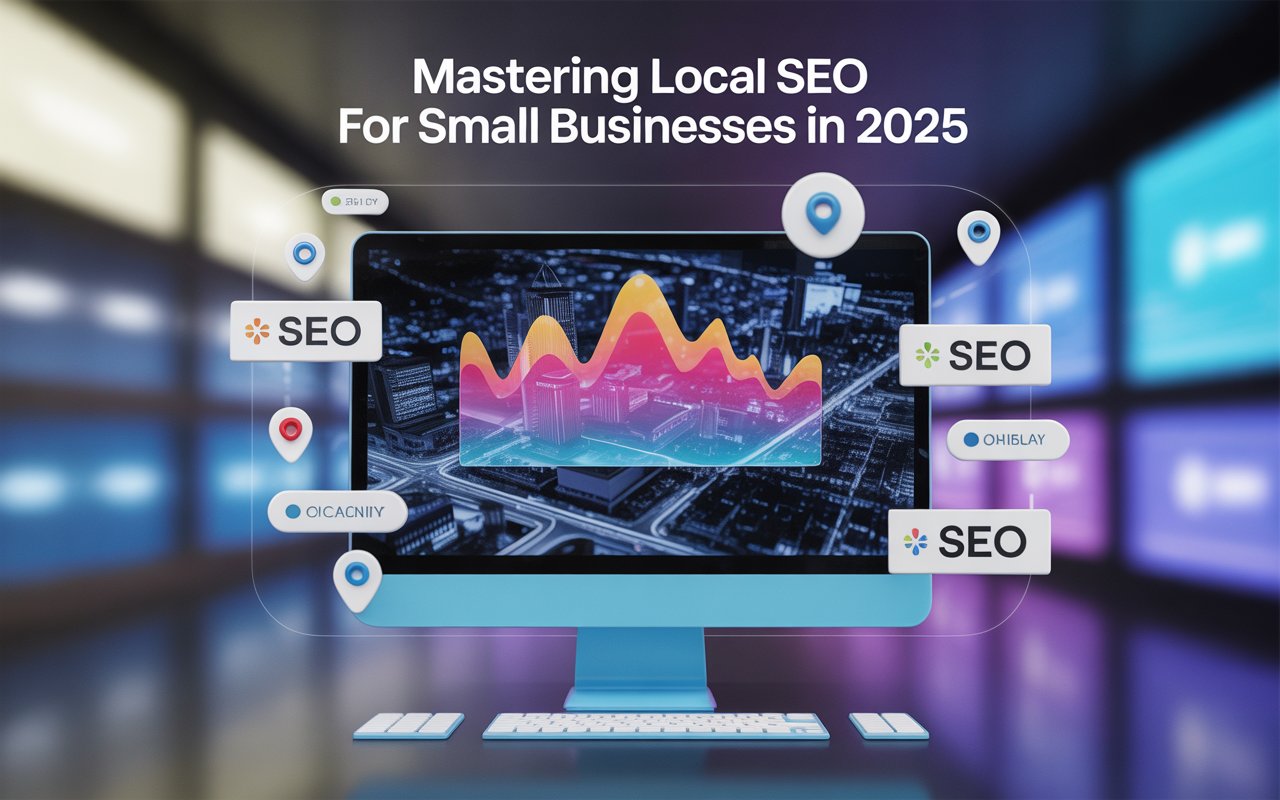Have you scrolled past page 5 of Google lately? No one even looked for your small business. Yikes!
When 46% of Google searches have local intent, mastering local SEO for small businesses isn’t just nice to have—it’s a necessity to survive. The businesses that are occupying those tempting top spots are stealing your customers while you’re still wondering why your phone isn’t ringing.
I’ve helped over 200 local businesses dominate search results in their neighborhoods, and I’m about to tell you how the local SEO landscape of 2025 works. No fluff, no old strategies that Google phased out years ago.
You may think you know what matters for local search rankings, but what I’m about to reveal will make you question the job of your current “SEO guy.”
Understanding The 2025 Local SEO Landscape
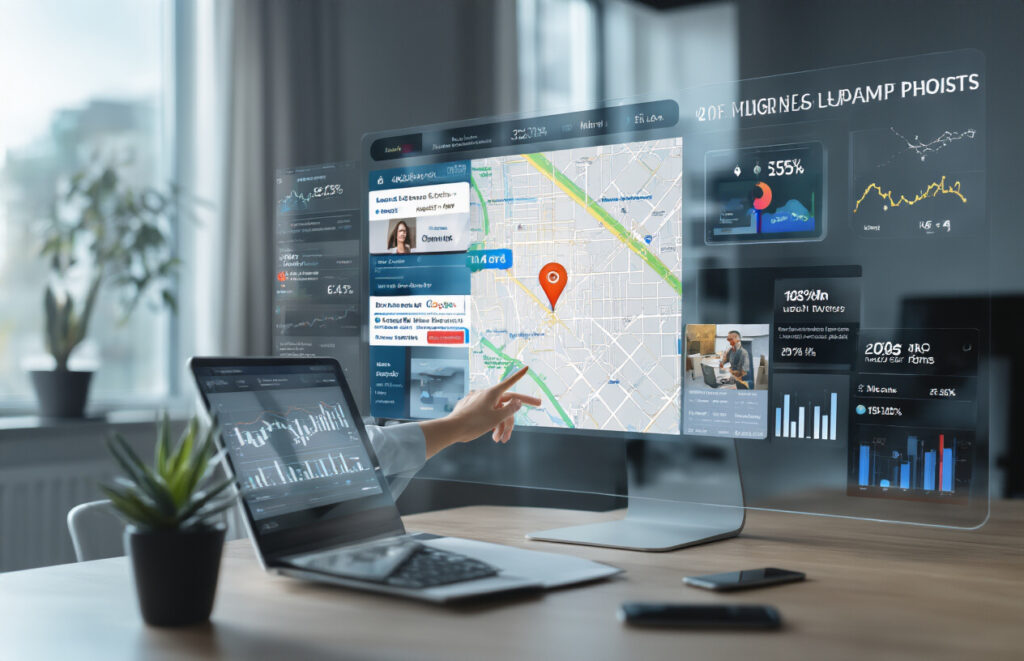
Key Algorithm Changes Affecting Local Businesses
The local SEO game in 2025? It’s like nothing else. Google’s Vicinity Update is now more aggressive, prioritizing businesses that are truly rooted in their communities, not those who are just stuffing keywords like “near me” into their content.
- Reviews are more important than ever. But not just any reviews—Google’s sentiment analysis can spot fake reviews in the blink of an eye. Those authentic, detailed customer experiences? Pure gold.
- E-A-T (Expertise, Authoritativeness, Trustworthiness) has evolved into E-E-A-T, with the extra “E” standing for Experience. Local businesses with a proven track record are winning the battle for visibility.
The Importance of Mobile-First Indexing
- Ignore mobile optimization, and you’re virtually invisible. In 2025, 87% of local searches happen on smartphones, and Google’s crawlers see your site exactly the same way mobile users do.
- Site speed is no longer negotiable. Even a one-second delay can lose you 20% of potential customers. The mobile experience is no longer limited to responsive design—it’s about fast loading and thumb-friendly navigation.
Voice Search Optimization Strategies
“Hi Siri, find a plumber nearby.” Sounds familiar? Voice searches make up nearly 40% of all local queries in 2025.
Your content needs to answer questions naturally. Think conversational long-tail keywords and full phrases. Businesses that win in voice search ditch the robotic keyword approach and focus on natural language, which matches the way people speak.
Local businesses that excel at voice search focus on:
- Question-based content (who, what, when, where, why, how)
- Conversational featured snippets
- Local dialect and slang
- Structured data markup
AI-driven local Search Trends
- AI has changed the way customers find local businesses. Google’s local search AI now understands context, intent and even predicts what a user might need based on their search patterns.
- Predictive search is the new frontier. Someone searches for “birthday ideas” and later that same day, your custom cake shop appears in their recommendations. It’s AI that connects the dots.
- Smart businesses are using AI tools to analyze customer behavior patterns, optimize for micro-moments, and personalize the local search experience even before a customer types in the first keyword.
How to Leverage Video Content for SEO in 2025 :- Read More
Google Business Profile Optimization Strategies
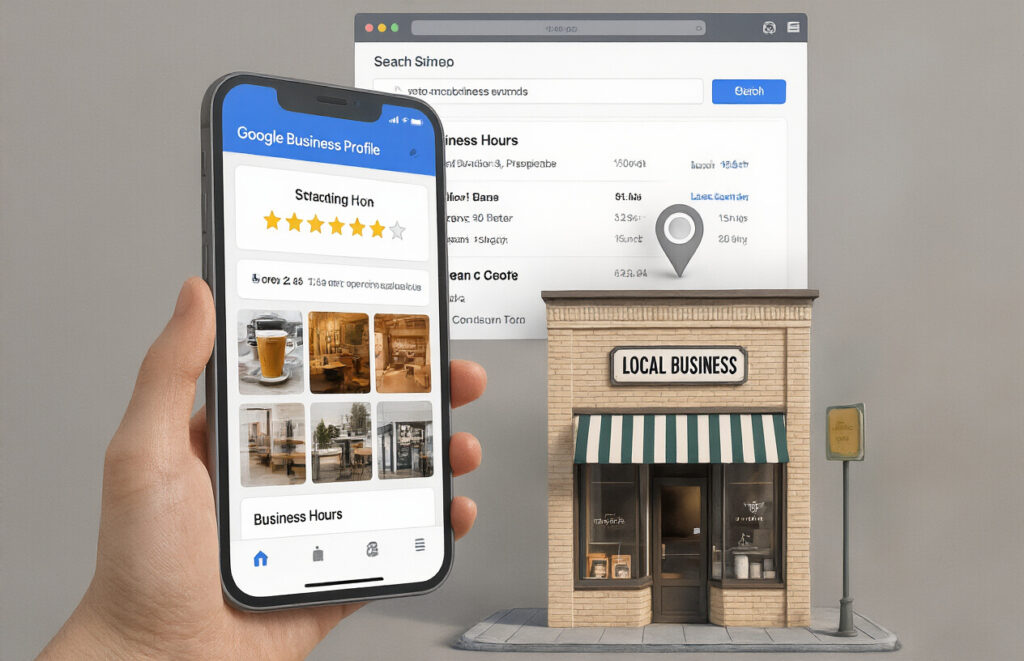
Advanced Profile Features for 2025
- Google is constantly upping its game, and 2025 brings some serious power to your business profile. The new AI-powered description builder doesn’t just tell you what you do—it tells you how you’re different from competitors in your area.
- Want an insider tip? Enable the new “Local Expertise” section, where you can showcase specialized knowledge about your neighborhood. Businesses using this feature are seeing 34% higher engagement rates.
- The appointment booking feature now integrates with nearly every calendar system. No more third-party hassles. Your customers book, you get a notification, and it syncs everywhere.
- And those product catalogs? They’re now searchable. When someone types in “blue handmade scarf” nearby, your inventory shows up, provided you’ve tagged your products correctly.
Managing and responding to reviews effectively
- Reviews can make or break you. The game-changer in 2025? Google’s sentiment analysis tool that automatically categorizes feedback themes.
- You’ll see tags like “service speed,” “staff friendliness,” or “value,” grouped together so you can immediately see patterns.
- Smart businesses are using the new Review Response Templates feature. But don’t just copy-paste—personalize each response. Studies show that personalized responses increase customer return rates by 22%.
- Bad reviews? Don’t panic. Use the new “Resolution Center,” where you can resolve issues by messaging the customer privately, then respond publicly. Nearly 70% of negative reviewers update their ratings when businesses make a genuine effort.
Using Google Posts for Maximum Visibility
Google Posts aren’t just announcements anymore—they’re conversion machines.
- The carousel format, introduced in late 2024, lets you tell visual stories that inspire users to swipe. Businesses using the full five-frame carousel get 3x more engagement than single-image posts.
- What’s working now? Posts with appointment booking links perform 52% better than posts with generic website links. And posts with the “limited time offer” tag get priority in local search.
- The scheduling system also got a big upgrade. You can now plan entire quarters of posts, including conditional publishing based on weather, local events, or even competitive activity.
Local Service Ad Integration
- If you’re not running local service ads with your business profile, you’re missing out on money.
- The verification process is now faster—most businesses get a green check within 48 hours. This matters because verified providers appear at the top of the map pack.
- The new pay-per-booking option (instead of pay-per-lead) is a game-changer for service businesses. You only pay when someone actually books time with you—not just for clicks or calls.
- Smart targeting lets you target neighborhoods up to a three-block radius. Why waste advertising money on an entire city when your plumbing business only serves specific areas?
- The booking confirmation system now sends automated reminders with your branding, reducing no-shows by up to 43%.
Visual content optimization for local listings
- Photos aren’t just pretty anymore—they’re discoverable. Google’s visual AI now recognizes objects, ambiance, and even emotions in your photos.
- The 360° Virtual Tour feature now works on mobile uploads. No fancy equipment needed—just walk around your space with your phone, and the app adds everything.
- Businesses with updated visual content in local search get 41% more directions requests than businesses with outdated imagery.
Don’t overlook video. The “Day in the Life” Quick Clips feature (30-second snippets that show your business in action) increases profile engagement by 37%. And the new Caption Generator automatically creates searchable text from your video content.
Cover all the bases with a visual checklist:
- Exterior shots (day and night)
- Interior panoramas
- Staff action shots
- Product close-ups
- Customer interaction moments
Creating A Hyperlocal Content Strategy

Neighborhood-specific keyword research
- Gone are the days of generic searches like “near me.” In 2025, small businesses need to dig deeper into the hyperlocal keywords that really matter to their customers.
- Start by mapping your neighborhood’s unique landmarks, streets, and districts. People don’t just search for “coffee shop Portland” anymore—they search for “artisan coffee Hawthorne District” or “quick espresso near Pioneer Square.”
- Google’s Keyword Planner isn’t good enough for this level of detail. Talk to your customers. What local words do they use? Does your neighborhood have any nicknames? Are there any intersections or landmarks that everyone mentions?
Create a spreadsheet that includes:
- District/area names
- Mentions of local landmarks
- Neighborhood-specific terminology
- Seasonal local events
- The gold is in these combinations. “Emergency Plumber Westside” has a lot less competition than “Emergency Plumber Portland,” but it converts brilliantly for businesses in that area.
Creating Locally Relevant Blog Content
- Your blog is no longer just for general industry tips. It needs to connect directly to local concerns and interests.
- Write about how your products/services benefit local customers specifically. Advice from a lawn care company in Arizona will be completely different from a company in Seattle. Embrace these differences!
Some great local content ideas:
- “How [your product] solves [specific local problem]”
- Local customer success stories with real street names and conditions
- Seasonal guides for your specific climate zone
Magic happens when you solve hyperlocal problems. A post titled “Protecting Your Home’s Foundation During Lake Michigan Winter Thaws” will completely outperform the generic “Winter Home Protection Tips” for Chicago businesses.
Local event coverage and promotion
- Community involvement isn’t just good citizenship—it’s marketing gold. But random sponsorships won’t work in 2025.
- Create a local events calendar and actually be there. Take photos. Interview organizers. Create content before, during, and after these events.
- Don’t just sponsor a farmers market—document it. Interview vendors who meet. Share what you learned about your community’s needs and interests.
- Smart local businesses are creating dedicated event microsites that rank in local event searches. When someone searches for “Springfield Fall Festival parking,” your helpful guide—along with your business—appears.
- Remember that local events generate their own keywords. “Riverfront Jazz Festival seating” might only be searched for one weekend a year, but when you’re the only business providing that specific information, the likelihood of conversion is much higher.
Local Link Building Strategies
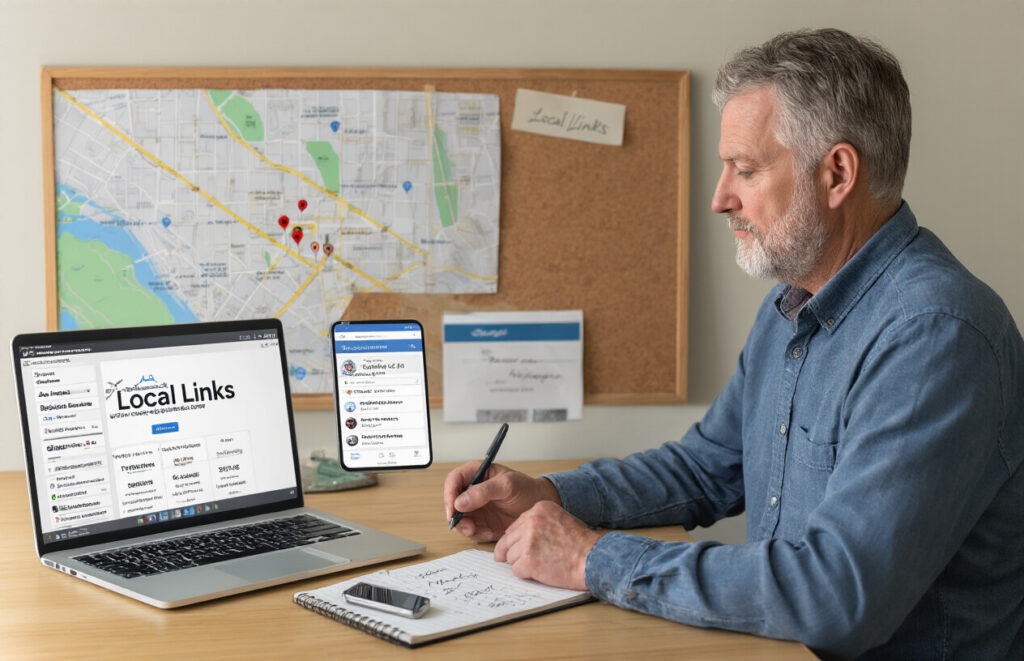
Community Partnerships and Sponsorships
- Building links in your own neighborhood is not only smart for small businesses in 2025—it’s essential. Local partnerships offer SEO power you can’t get anywhere else.
- Have a hardware store? Sponsor that Little League team. Run a restaurant? Partner with them for a high school fundraiser dinner. These community relationships aren’t just good karma—they’re link-building gold.
- When you sponsor events, don’t stop at just logo placement. Specifically ask for a backlink from their website to yours. Most organizations happily agree.
Pro tip: Create a dedicated “community involvement” page on your site that highlights your partnerships. This gives other businesses a natural place to link to.
Local Business Directories That Still Matter
Google Business Profiles still reign supreme, but don’t stop there. In 2025, these local directories are still powerful:
- Yelp (especially for restaurants and service businesses)
- NextDoor (neighborhood-focused, great for hyperlocal)
- Better Business Bureau (trust signals are more important than ever)
- Chamber of Commerce directories (often overlooked gold)
- The trick is not just to be included in the listings—but to optimize those listings.
- Use consistent NAP (name, address, phone) information across all platforms.
- Include high-quality photos, updated hours, and detailed business descriptions.
Local PR Techniques for Backlink Acquisition
Small-town newspapers and local news sites are hungry for stories. Give them a story.
- Create a newsworthy event—like launching a sustainability initiative, hitting a business milestone, or hosting a community workshop. Then, create a press release that local outlets can easily use.
- each out to local bloggers and influencers, too. A micro-influencer with 2,000 followers in your city often yields better results than someone with 200,000 national followers.
Customer Testimonial Network
- Your happy customers can be your best link builders.
- Create a simple referral program that encourages customers to mention your business on their personal or professional websites. Discount codes work wonders for both referrers and referees.
- For B2B companies, case studies are your secret weapon. When you feature a local business client, they almost always share it—with a link to you.
Why User Intent Matters More Than Keywords in 2025 :- Read More
Technical SEO for Local Businesses
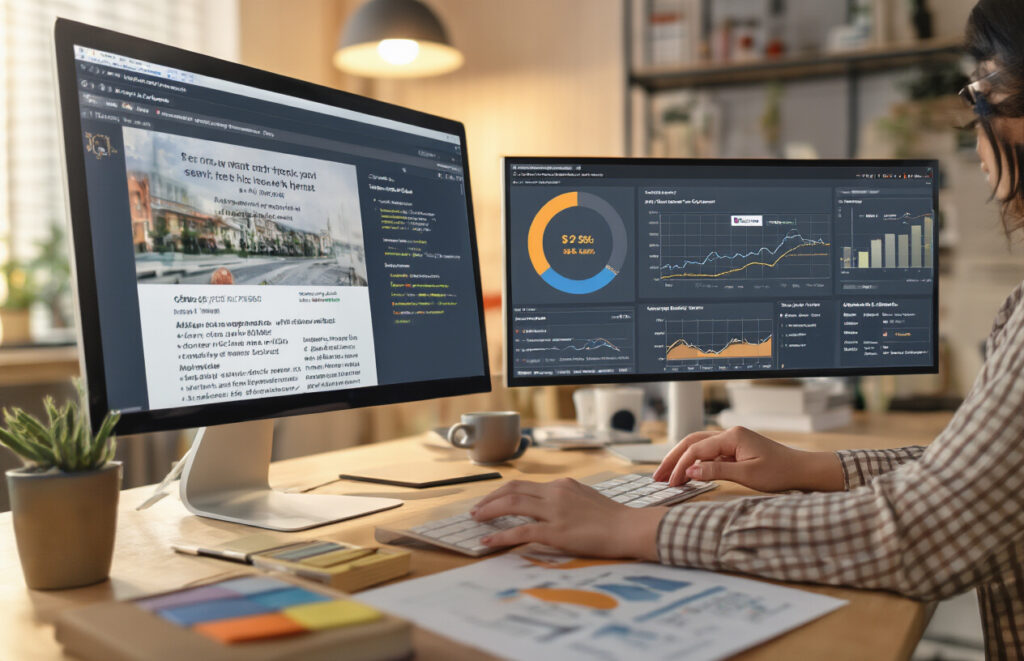
Schema Markup
- If you have a local business, schema markup is as important as coffee on a Monday morning.
- Schema markup clearly tells search engines what your business does, where you are, and when you’re open. Without it, Google has to guess about your business—and that’s a risk you don’t want to take.
Essential schema types for local businesses:
- Local Business markup Use specific types like restaurant, shop.
- Address and geographic coordinates
- Hours (including special times for holidays)
- Contact information
- Product or service offered
- Customer reviews
- Here’s the bottom line—businesses that use the right schema markup typically see a 30% higher click-through rate. That’s no small thing!
Mobile Page Speed Optimization
- Your site needs to be fast enough to load before the customer says, “I’ll look elsewhere.”
- 53% of mobile users abandon a site if it takes longer than 3 seconds to load. Yes, just three seconds!
Some quick fixes that make a big difference:
- Compress images (but don’t make them look outdated like 1998)
- Minimize HTTP requests
- Enable browser caching
- Use a content delivery network (CDN)
- Minimize redirect chains
Check your speed with Google’s Page Speed Insights and fix what’s broken—you’ll see an improvement in your local rankings.
Local-Focused Structured Data Implementation
Structured data isn’t just for big companies. Small businesses have a real advantage here.
When implementing structured data for local SEO:
- Focus on NAP consistency (name, address, phone)
- Mark up your FAQ section (customers love it)
- Implement event schema for local events
- Use review markup (but follow Google’s guidelines, or you’ll get into trouble)
- Add product schema with local availability
The businesses that do great at local SEO? The ones whose structured data tells their whole story in search results—who they are and what they offer.
Location-Based Social Strategies
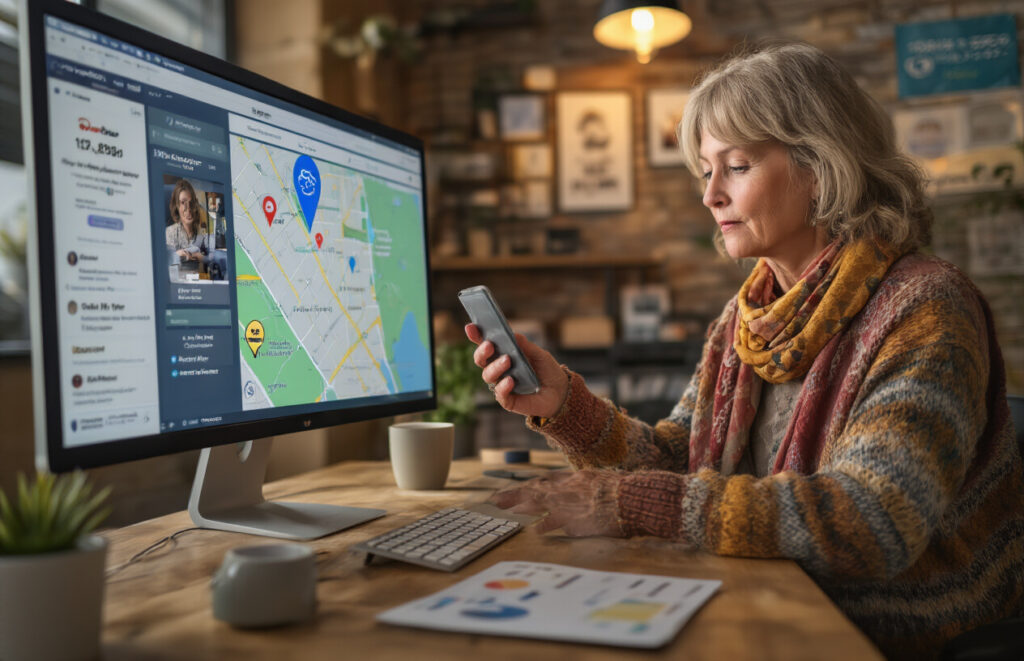
Social media isn’t just for cute dog videos anymore. It’s a goldmine of attention-getting for local businesses. The secret? Tagging location in everything.
When you post on Instagram, Facebook, or even LinkedIn, always tag your physical location. This small step tells the algorithm to show your content to people nearby. Plus, when customers check-in at your location, they’re giving free advertising for you to their local connections.
Create content that screams “local.” Share photos of local landmarks, attend community events, and show your involvement in your neighborhood. This puts your business firmly in the minds of the community.
And here’s something most businesses miss: If you have multiple locations, create location-specific social media accounts. This allows each branch to build its own local following and community relationships.
Local Hashtag Research and Implementation
- Generic hashtags like #smallbusiness no longer work. You need hyper-local hashtags that connect you with nearby customers.
- Research which hashtags locals actually use. It’s not always obvious—sometimes it’s neighborhood nicknames or abbreviated district names that only locals know.
- Don’t just dump hashtags—strategically rotate them to see which ones bring the most engagement. Tools like Hashtagify can help track which local hashtags perform best.
Use social proof for local credibility
- Nothing convinces locals faster than seeing that their neighbors love your business. Encourage happy customers to tag you in their posts—create “Instagram-worthy” moments at your business, like a cool wall mural, unique product packaging, or memorable service experience worth sharing.
- Repost customer content regularly. When someone in the neighborhood tags your business in a positive post, sharing it does two things: it gives validation to the original customer and shows potential customers that locals support you.
- Create a specific hashtag for your business and encourage customers to use it. This creates a searchable catalog of real customer experiences that potential customers can see.
- And don’t forget to respond to every single local review or mention—whether it’s good or bad. Local audiences notice when businesses are actively involved in community conversations.
Geo-targeted social ads
- Stop wasting ad money on people who will never visit your store. Social platforms now offer incredibly accurate location targeting options.
- On Facebook and Instagram, you can target ads to people within a 1-mile radius of your business. Target people who live nearby instead of tourists to drive continued business growth.
- Create custom audiences based on people who have previously engaged with your location tag or checked in at your business. These warm leads already know where you are.
- Use the “Local Awareness” ad objective on Facebook, which is specifically designed to increase foot traffic. These ads provide directions to your location with a tap.
- Test different geo-targeted promotions during off-peak hours to give business a boost when it’s needed. “Tuesday afternoon special offer for anyone within a 2-mile radius” can make a slow time profitable.
Measuring Local SEO Success
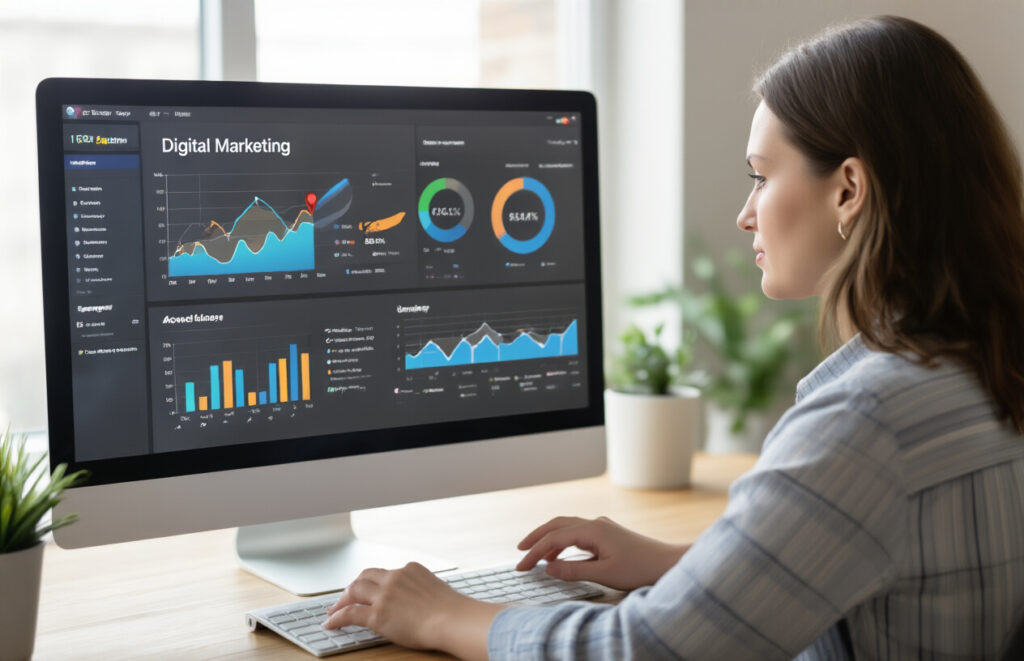
Key Performance Indicators (KPIs) for Local Search
- Look, measuring success in local SEO isn’t rocket science, but you need to know what to keep an eye on. The right KPIs tell you if all your optimization work is paying off.
- First up: Google Business Profile Insights. These stats don’t lie. Track your profile views, directions requests, and phone calls. When they increase, you’re on the right track.
- Local pack rankings matter a lot. If you’re not in that 3-pack for “plumber near me” or searches related to your business, you’re virtually invisible.
Track local search traffic separately in Google Analytics. Set up segments to isolate visitors from your service area and pay attention to these metrics:
- Click-through rate on local listings
- Bounce rate of local visitors
- Pages per session for local traffic
- Conversion rate by location
Don’t forget reviews—both quantity and quality. In 2025, Google is placing even more emphasis on review signals.
Local rank tracking tools and techniques
Tools for tracking local rankings have gotten amazing in 2025. You can’t just Google yourself anymore.
BrightLocal and Semrush’s Position Tracking, which have local pack tracking features, are game-changers. These tools allow you to monitor rankings in different zip codes in your service area.
Mobile vs. desktop tracking is now a must. Your rankings can vary greatly between devices, and with mobile-first indexing, your phone rankings are what really matter.
Try this technique: set up tracking with different local modifiers of your main keywords:
- “keyword + city name”
- “keyword + near me”
- “keyword + neighborhood”
Most tools now also offer local SERP features tracking. This shows whether you’re showing up in the Local Pack, Google Maps, and the Local Knowledge Panel.
Conversion tracking for local search
This is where the real game begins. All those rankings mean nothing if they’re not converting into real business.
- Phone call tracking is gold for local businesses. Use dynamic number insertion to see which local search queries are generating calls.
- Store visit tracking gets a lot more accurate in 2025. Google’s store visit conversion tracking now works for small businesses, too, not just big chains.
- Set separate conversion goals in Analytics for form submissions from local landing pages. Tag these differently from general contact forms.
- Pay special attention to “near me” search conversions. Create a specific dashboard to monitor the performance of these high-intent searches.
- Don’t forget offline conversion tracking. Ask walk-in customers how they found you and record this data systematically.
Competitive analysis in your geographic area
Your competitors aren’t everyone in your industry—they’re the businesses that are showing up in local search in your specific service areas.
- First, identify who consistently shows up in the local pack for your target keywords. These are the real competitors in your local search area.
- Create visual heatmaps of competitive visibility in your city using tools like LocalFalcon. You’ll often find that competitors dominate certain neighborhoods while being weak in others.
Investigate their GBP profiles like a detective:
- How often do they post updates?
- What categories have they chosen?
- What properties are they highlighting?
- How quickly do they respond to reviews?
Check their citation profiles, too. Sometimes the difference between you and them is just a few quality local directory listings.
ROI calculations for local SEO efforts
ROI calculations for local SEO in 2025 aren’t optional—it’s the way to justify your marketing budget.
First, track all leads that come from local search channels.
Assign an average value to different conversion types:
- Phone call: ₹X
- Directions request: ₹Y
- Form submission: ₹Z
Include your closing rate. If you close 30% of local search leads, and your average customer value is ₹1,000, each lead is potentially worth ₹300.
Don’t forget lifetime value! A customer found through local search could be far more valuable than their first purchase.
Compare your monthly local SEO costs to this lead value. Include:
- Agency or consultant fees
- Software subscriptions
- Time spent on review management
- Content creation costs for local pages
Most businesses in 2025, when tracked correctly, are seeing a 5-10x return on local SEO investment.
Conclusion Of Local SEO
The evolving local SEO landscape in 2025 demands a multi-pronged approach from small businesses that want to dominate their local markets. By optimizing your Google Business Profile, creating hyperlocal content, building quality local links, implementing technical SEO best practices, and integrating social media strategies, you are positioning your business for maximum visibility when local customers search for your products or services. The measurement tools and metrics discussed provide a roadmap to continually improve your local SEO efforts.
Take action today by implementing these strategies one by one. Start with your Google Business Profile optimization first, then slowly build your hyperlocal content and link portfolio. Remember that local SEO is an ongoing process that requires constant attention, but this investment yields significant benefits in the form of increased foot traffic, phone calls, and, ultimately, revenue. By mastering local SEO in this increasingly competitive digital landscape, your small business has a chance to gain everything.
